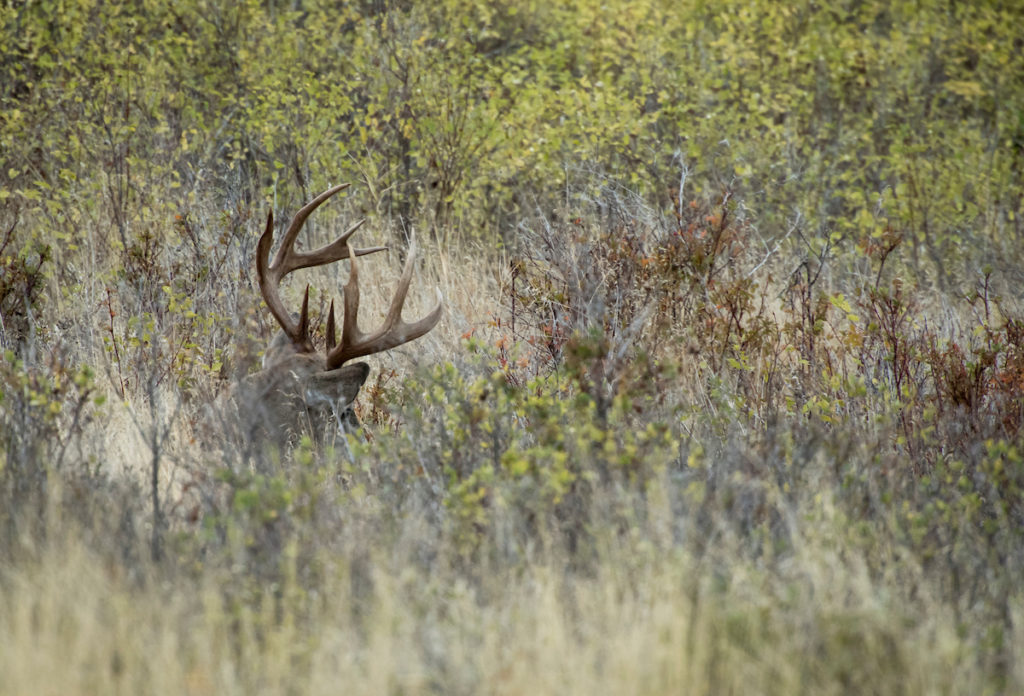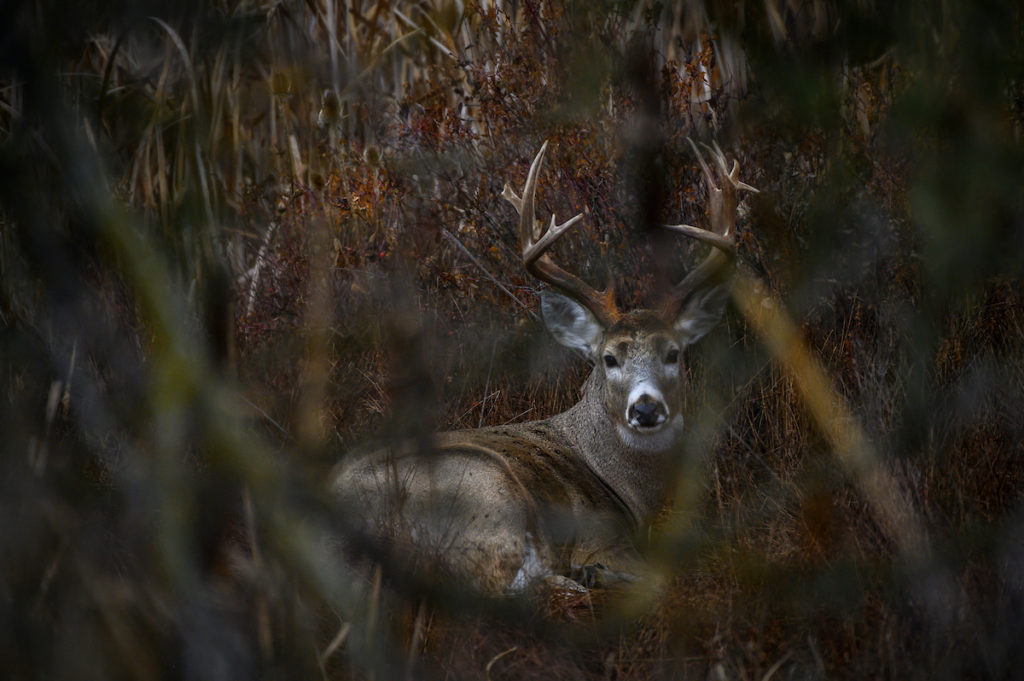Not all hunting spots are created equal. One location might consistently produce multiple deer sightings, while deer infrequently visit the farm across the road. There are many reasons one hunting spot might be better than the next, but you need to know what you’re looking for before you can try to answer why.

The best hunting spots have excellent deer habitat. These areas are often those with early successional plant growth, meaning they’re thick with a high stem count of young vegetation like forbs, grasses and small, shrubby trees. Don’t be fooled by the big, beautiful trees and manicured-like appearance of a mature forest. While nice to look at, those big trees have dense canopies that cast lots of shade, preventing the growth of new browse that deer need for bedding cover and food. Remember, deer need to feel safe to call an area home . Find the dense cover you’d expect would hold a rabbit or grouse. If these critters are present, it’s likely deer are around, too.
Think about how often you make the trip from your favorite couch to the kitchen when you’re enjoying some R&R at home. Sure, this isn’t an apples-to-apples comparison, but an understanding of what’s on the menu in the whitetail woods will undoubtedly help you pinpoint spots to ambush deer. Food sources vary geographically and seasonally, so start your search by taking inventory of the options in your area. Agricultural fields are an obvious option in farm country, but deer rarely visit these destination food sources in daylight during the season, specifically in pressured areas. If you focus your efforts on crop fields, consider evening hunts so you can access the location before deer start filtering into the field. Backing off field edges and closer to bedding cover when hunting pressured locations can be an effective ambush to intercept deer that otherwise wouldn’t arrive at the field until after daylight.
Mast trees like oaks, apples and persimmon are noteworthy no matter where you’re hunting, especially those in secluded areas where deer feel safe. If you’re a big-woods bowhunter, key in on timber cuts where deer browse on new growth, but don’t forget to monitor the acorn crop in your area, too. A quick walkabout in your hunting area with a pair of binoculars will help you identify the oaks loaded with acorns and those with only a handful. Food sources can change in short order, so keeping tabs on the goodies deer are frequenting at any given time will make you a more efficient bowhunter.

Excellent habitat and attractive food are only part of the whitetail equation. Deer avoid hunting pressure by spending most of their time in secluded bedding areas during shooting hours before filling their stomachs, mostly at night. Deer beds in thick cover are an obvious giveaway for identifying a bedding area, but don’t overlook heavily used trails, droppings and buck sign like rubs and scrapes. Areas with the highest densities of fresh sign indicate that deer spend the majority of their time nearby. Mark these locations on a map, study nearby food sources and begin strategizing an ambush.
Deer often bed in locations with cover or steep terrain to their back to hide themselves from approaching threats. They typically orient themselves so the prevailing wind also blows over their back, which helps them pick off any approaching threat by scent as they monitor the downwind location with their eyes. You can identify potential bedding areas by studying an aerial map and confirm your suspicions by doing a walkabout through your hunting area. Don’t blatantly walk around your intended hunting spot, though. Instead, wait for a day with precipitation in the forecast. Rain or snow will minimize the impact your scent will leave in the area. Mark your favorite locations for treestands or ground blinds on a map and study access routes that’ll allow you to sneak in undetected. Set up a well-placed stand or blind downwind from where deer are likely to approach, and the trap is ready.
An access route that allows you to consistently enter and exit a hunting location without spooking too many deer is the last and most integral characteristic to consider. Spots that can be accessed time and again without alerting deer at all are low-risk locations. While bowhunters can hunt them repeatedly without much impact to the area, conservative locations rely on the deer reading the proverbial script perfectly to result in meat in the freezer. These locations typically sacrifice the proximity of your treestand or ground blind to the bedding area.
Aggressive bowhunters can push the envelope under ideal wind and weather conditions to take a calculated strike at hunting a buck’s bedroom. Beware, though, that hunting aggressively time after time requires multiple hunting locations because you’ll certainly pressure deer by hunting this way. In addition, in high-risk areas, you need perfect wind and weather conditions to hunt a spot very close to where you expect a buck to be bedded.
There isn’t a one-size-fits-all approach to picking the perfect hunting spot. However, once you get to know an area and pinpoint a few potential hotspots, you can get creative with your hunting tactics to eventually find a bowhunting style that fits you best. Whether you want to swing for the fences and try filling the freezer with an aggressive play in a bedding area, or settle in for the long haul with a more conservative setup, a good hunting spot is an essential part of bowhunting. As you get more experience, learning to identify the five characteristics of a great spot — and then knowing exactly where to set up — will become easier and easier.